#exportimport
Explore tagged Tumblr posts
Text

Traditional freight booking is slow, complex, and often filled with hidden costs. Online shipping container booking is changing that by offering real-time quotes, transparent pricing, and instant confirmations, all from one dashboard. It streamlines logistics, reduces manual errors, and gives businesses full control over their shipments.
With growing global trade and the demand for faster delivery, digital freight solutions aren’t just convenient, they’re essential. Embracing this shift means staying ahead in a competitive market and shipping smarter than ever before.
Shipping just got a digital upgrade 📦💻 No more endless emails, hidden costs, or delayed quotes. Online container booking is changing the way businesses move freight, faster, easier, and way more efficient.
Say goodbye to old-school freight hassles and hello to real-time tracking, instant pricing, and smarter logistics. Welcome to the future of freight. Book with confidence and clarity, only at Citrus Freight.
#FreightForwarding#LogisticsSolutions#ShippingMadeEasy#SmartShipping#ContainerBooking#DigitalFreight#SupplyChainSimplified#CitrusFreight#B2BLogistics#ExportImport#OnlineShipping#shipping
0 notes
Text

The Global Loudspeaker Industry Is Booming — Who's Powering the Sound?
From sleek home systems to powerful automotive audio and stage setups — loudspeakers have become an essential tech component in modern life.
But what's happening in the world of trade?
🌍 Top Exporters: China, Mexico, Vietnam 📥 Top Importers: USA, Germany, France 📈 Market Drivers: Consumer electronics, events, automotive audio
With demand growing, the loudspeaker trade is reverberating across borders. Discover which countries are dominating the supply chain and how the market is evolving.
📖 Read full trade insights, stats, and country analysis here: 👉 https://www.thetradevision.com/blogs/amplifying-the-loudspeaker-industry
0 notes
Text
What is a Shipping Bill in Export?
Have you heard of the term "shipping bill" before as an exporter? If you are new to exporting, you might find this term a bit technical, but it is actually one of the most important documents to deal with while starting your export business in India.
Every exporter company, big or small, needs to file a shipping bill before sending out the products from India. It is a document for the custom department to check what goods are going out of the country, how much is it worth of and where is it going. Think of shipping bill as a green signal from the customs when you hear, "The shipment is good to go".

The world of export is filled with documentations, but the shipping bill is something you cannot ignore. Over this blog, we will explore the importance of shipping bill, what it is and why it matters.
What is a shipping bill?
A shipping bill is a document that any exporter must file with the customs clearance department before sending out the shipment from India. It is a kind of declaration of what is being exported out of India, it includes details like:
Nature of the goods
Value and quantity of goods
Exporter details
Consignee details
Mode of transport
Basically, a shipping bill is a custom's permission slip to allow the goods to physically leave India. Shipping bill is generated automatically through ICEGATE and is mandatory for clearing goods at ports or airports.
Once the shipping bill is approved, it acts as a basis for
Custom permission slip (Custom clearance)
Claiming benefits like RoDTEP
Filing for regulations under FEMA
If you are exporting without shipping bill in your hands, it means that you are shipping illegally. It is one of the key documents to prove that the transaction has actually happened.
Importance of the Shipping Bill for Exporters
If you are an exporter in India, then shipping bill is not just a formality to be done, it is actually a ticket for your goods to get out of the country. Custom department needs this document the most, without shipping bill, custom won't let your documents move.
Here is why the shipping bill is the most important document:
Official export declaration: The shipping bill tells the customs each and every detail of the shipment. Who are you sending it to, what's the value and quantity, and what are you sending, all the details are in the shipping bill.
Dependence of custom clearance: For custom department, no shipping bill means no clearance. It is a document that custom officers review before giving the green light for export.
Export incentive: For claiming the export incentives like RoDTEP, MEIS etc., you will be needing shipping bill as a proof.
Export history: For tracking export transactions, the shipping bill acts as a record for export history.
In short, if you are a first time exporter or doing it for a long time, shipping bill is one document you cannot skip.
Different Types of Shipping Bills for Exporters
Different types of exports require different kinds of shipping bills. Not all exports are the same, based on the nature of the shipment and the kind of export you are doing. Here is a list of different types of shipping bills-
Free shipping bill- This types of shipping bill is required when the exporting goods dont qualify for any export incentives.
Dutiable shipping bill- If you are exporting any kind off goods that require export duty, this kind off shipping bill will be required.Custom duty will be calculated based on the duty of the bill.
Drawback shipping bill- If you think you can claim a duty drawback and then this shipping bill is for you. It helps you in getting refund of duties that you have already paid while importing few raw materials of the shipment.
EPS shipping bill- This shipping bill stands for export promotion scheme shipping bill. This is for shipment exported under schemes like EPCG or MEIS.
Exporters can file for these shipping bills electronically through the ICEGATE portal, and based on the export declaration, the correct types of shipping bills are selected.
What are the Key Components of a Shipping Bill?
A shipping bill is one of the most important documents for moving your shipment out of the country. So, before going to fill out the form, it's important to know the key components of a shipping bill. Here is what you will find in a shipping bill:
Exporter Details: This section basically requires your details, like name, IEC code, address, etc.
Consignee Information: Details of who you are sending goods to, like- name, address, country etc.
Nature of consignment: An accurate description of the goods and nature of the consignment, like product name, type and its overall description.
HS code- This code helps the custom to identify the nature of your goods properly. This 8 digit code is crucial for incentive, compliance and duty.
Shipping bill type- As explaid above, different types of shipping bills, this will determine how custom department will treat your shipment.
Mode of transport: This clarifies whether your shipment will move through air, seo or land.
LUT/Bond details: If you are exporting without paying the GST, those details must be included here too.
Documents Required for Filing a Shipping Bill
You will need to arrange a few shipping bills before filling one out. This will help customs to verify your shipment and make sure everything is in order. Here is a list of documents needed:
Commercial invoice: This has the details of the goods being exported- quantity, quality, price, terms of sale, etc.
Packing list- This has details of goods that are packed- like weight, number of boxes, dimensions and what is inside the boxes.
IEC code- This is the importer exporter code, and it's like an ID card for your export business.
Export/Purchase order: This is a proof of order from your overseas buyers.
Declaration: A declaration provided by you that the information given is true and you have all the documents to verify it.
LUT or Bond documents: If you are exporting without GST under LUT then you need to submit the document for the same.
Once you have gathered all these documents, you are ready to file for shipping bill on the ICEGATE portal. The documents and details must be accurate, any mismatch might lead to rejection from the custom department.
What is the difference between a shipping bill and a bill of lading?
Read more: What is a bill of lading? And where is it used?
Conclusion
Getting your shipping bill right is one of the most important steps in your exporting business. It is not just a regular document, it is important as it gets the green signal form the custom department of India to send your shipment abroad. Whether you are new to export or scaling up your export business, getting the right shipping bill will save you from the delays, penalities and missed opportunities.
At Infinity, we understanfd the importance of compliance related paperwork, especially when you alone have to deal with a number of documents and other paper work. That is why we help Indian exporters to not just receive international payments but also help you with export process from end to end.
Sign up today!
#blog#Shipping Bill#exporter#exportimport#blogger#instagood#blogging#blogpost#bloggerstyle#follow#like#bloggers#life#influencer#instadaily#instablog#payments#payment gateway#payment solutions
0 notes
Text
Best Freight forwarding company Noida
Experience excellence with the best freight forwarding company Noida businesses trust. We provide end-to-end freight solutions, including global shipping, customs clearance, and real-time tracking. Our dedicated team ensures timely and secure cargo delivery, making us the preferred partner for businesses seeking dependable logistics support. Simplify your international trade with our professional services.
#BestFreightForwardingCompanyNoida#FreightForwarding#LogisticsSolutions#NoidaBusiness#CargoTransport#ShippingServices#InternationalShipping#CustomsClearance#SupplyChainManagement#FreightServices#NoidaLogistics#ExportImport#Transportation#LogisticsExpert#FreightBroker#GlobalShipping#NoidaTrade#Warehousing#FreightManagement
0 notes
Text
Exporters and Suppliers of the Best International Trade Products
Connect with top exporters and suppliers delivering high-quality international trade products across diverse sectors, including agriculture, textiles, machinery, and consumer goods. Experience reliable service, competitive pricing, and a strong global supply chain. Boost your business with trusted trade partners.
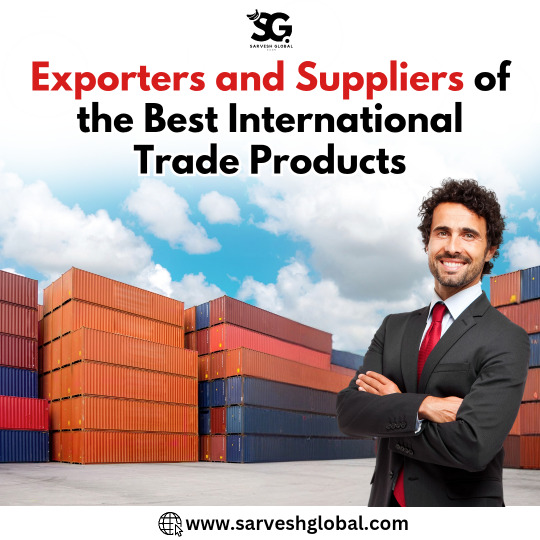
#InternationalTrade#GlobalExporters#TrustedSuppliers#B2BMarketplace#TradeSolutions#QualityProducts#ExportImport#GlobalSourcing#BusinessExpansion#ExportLeaders#TradePartners#WorldwideSuppliers#ExportExperts#PremiumTradeProducts
0 notes
Text
Hi everyone,
If you're involved in international trade, customs, or logistics, you know that Rules of Origin are crucial to ensuring compliance and optimizing trade operations. That’s why I highly recommend checking out this Understanding Rules of Origin course – it’s a must for anyone looking to get a deeper understanding of these complex regulations!
Why You Should Take This Course:
Master the Rules of Origin: Learn the essential concepts behind Rules of Origin and how they impact compliance, preferential agreements, and trade operations.
Practical Insights on Certificates of Origin: Understand the procedural requirements for obtaining and managing both preferential and non-preferential Certificates of Origin.
Accumulate Knowledge on Accumulation: Dive into the various types of accumulation (bilateral, regional, and full) and how they help businesses meet origin criteria more effectively.
Comprehensive Case Studies: Explore real-world applications of origin determination and gain practical insights from case studies in international trade.
Key Takeaways:
Preferential vs. Non-Preferential Origin: Learn how preferential agreements and trade organizations affect origin determination.
Transportation Rules: Understand how logistics and transportation affect origin determination and ensure compliance with international trade rules.
Storage & Re-export: Discover the rules for storage and re-export and how they impact origin certification.
Auditing & Verification: Gain skills in auditing and verifying the validity of Certificates of Origin to ensure compliance with regulations.
Bonus:
One Month Follow-Up: After the course, you’ll have the opportunity for one-on-one follow-up with the instructor to apply your new knowledge and discuss challenges in real-world scenarios!
This course is perfect for professionals looking to improve their understanding of international trade compliance and origin certification. Whether you’re just getting started or looking to enhance your expertise, it’s a game-changer!
For more details and to register, check out the full course here: Understanding Rules of Origin
Feel free to share your experiences with Rules of Origin or ask questions – I’d love to hear your thoughts!
#RulesOfOrigin #InternationalTrade #CustomsCompliance #Logistics #TradeOperations #TradeCompliance #CertificatesOfOrigin #PreferentialTrade #OriginDetermination #GlobalTrade #AccreditedTraining #InternationalBusiness #CustomsRegulations #SupplyChainCompliance #ExportImport #TradeRules #ComplianceTraining #TradeSkills #CustomsTraining #TradeAgreements #OriginCertification
#RulesOfOrigin#InternationalTrade#CustomsCompliance#Logistics#TradeOperations#TradeCompliance#CertificatesOfOrigin#PreferentialTrade#OriginDetermination#GlobalTrade#AccreditedTraining#InternationalBusiness#CustomsRegulations#SupplyChainCompliance#ExportImport#TradeRules#ComplianceTraining#TradeSkills#CustomsTraining#TradeAgreements#OriginCertification
0 notes
Text

🌏 India’s Largest Trading Partner – Who Tops the List? 📊
India is a major player in global trade, but do you know which country is its biggest trading partner? Discover key insights, trade volumes, and market trends in our latest blog! 🚢📈
🔗 Read More
0 notes
Video
youtube
School Shoes ? Export School Shoes/ Shoes Export to middle east and Europe.
0 notes
Text
How IEC Registration Helps Businesses Expand Globally

Introduction: The Role of IEC Registration in Global Trade
Expanding a business beyond domestic borders is an exciting yet complex endeavour. Companies looking to explore international markets must navigate trade regulations, customs procedures, and compliance requirements. One of the fundamental prerequisites for businesses in India to engage in international trade is obtaining an Import Export Code (IEC) Registration.
The IEC registration, issued by the Directorate General of Foreign Trade (DGFT), Ministry of Commerce & Industry, Government of India, acts as a key document for businesses to legally import or export goods and services. It not only facilitates customs clearance but also provides access to government incentives and trade agreements, making it an essential tool for businesses aiming for global expansion.
Understanding IEC Registration and Its Importance in International Trade
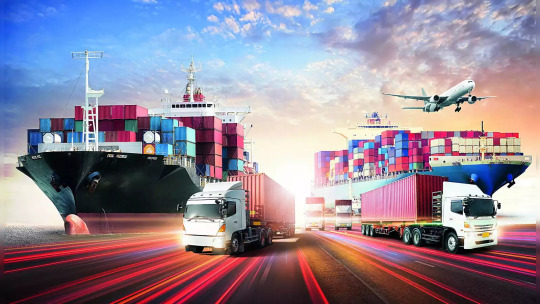
What is IEC Registration?
IEC registration is a 10-digit identification number assigned to Indian businesses involved in importing and exporting goods or services. Unlike other business licenses, it is a one-time registration that remains valid for the lifetime of the entity, requiring only periodic updates. Without an IEC, businesses cannot clear goods through customs, conduct foreign exchange transactions for trade, or avail themselves of export benefits.
Why is IEC Registration Essential for Global Expansion?
For businesses aiming to expand beyond Indian markets, IEC registration serves as a legal gateway to international trade. It streamlines import-export operations, ensures compliance with Foreign Trade Policy (FTP) guidelines, and builds credibility with global buyers and suppliers. Additionally, many international clients and banking institutions require proof of IEC registration before engaging in trade partnerships or processing cross-border transactions.
Key Benefits of IEC Registration for Businesses Expanding Globally

Legal Authorization to Conduct Import and Export Activities
One of the primary benefits of IEC registration is that it grants businesses legal authority to import or export goods and services. Without it, companies face restrictions on trade and may be unable to process shipments through customs.
Access to International Markets and New Revenue Opportunities
With globalization, businesses are no longer confined to local markets. IEC registration allows companies to explore new trade opportunities, expand their customer base, and increase revenue streams by reaching international clients and suppliers.
Simplifies Customs Clearance and Reduces Trade Barriers
Having an IEC number makes customs documentation more efficient and less prone to delays. The registration is linked to customs electronic data interchange (EDI), enabling businesses to process shipments smoothly without unnecessary bureaucratic hurdles.
Eligibility for Government Export Incentives and Schemes
Registered exporters can take advantage of various government schemes aimed at promoting international trade, such as:
Merchandise Exports from India Scheme (MEIS): Offers duty credit incentives for exporting specific products.
Service Exports from India Scheme (SEIS): Provides financial benefits to service providers exporting to foreign clients.
Duty Drawback Scheme: Allows exporters to receive refunds on customs duties paid for imported goods used in manufacturing export items.
Enhances Global Business Credibility and Trust
Having an IEC registration increases credibility among international clients and suppliers. Many foreign businesses require proof of IEC registration before entering trade agreements, as it signifies that the business is legitimate and compliant with Indian trade laws.
Step-by-Step Process to Obtain IEC Registration for Global Expansion
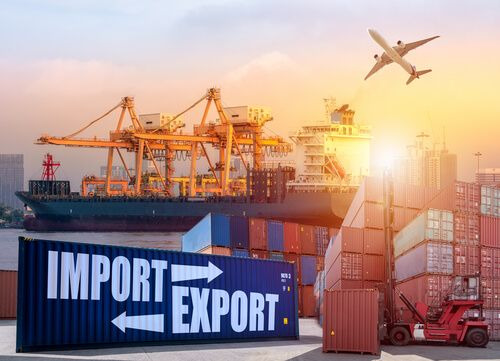
Step 1: Determine Business Eligibility for IEC Registration
Businesses involved in import or export activities—including individuals, proprietorships, partnerships, and corporate entities—must obtain an Import Export Code (IEC) Registration. However, certain entities, such as government agencies, may be exempt under specific conditions.
Step 2: Gather Required Documents for IEC Application
To apply for IEC registration, businesses must provide the following:
PAN Card of the business or applicant
Business registration documents (Company Incorporation Certificate, GST certificate, etc.)
Bank account details and a canceled cheque
Address proof (Aadhaar, Passport, or Voter ID for individuals; company registration certificate for firms)
Digital Signature Certificate (DSC) for corporate applicants
Step 3: Submit Application Online on the DGFT Portal
Businesses need to apply through the DGFT portal and fill out Form ANF-2A.
The application must include all required details and supporting documents.
A government fee must be paid to process the registration.
Step 4: DGFT Verification and IEC Code Issuance
Once submitted, the DGFT verifies the application and documents.
If everything is in order, the IEC code is generated and issued electronically within 1-2 working days.
How IEC Registration Helps Businesses Secure Global Trade Deals
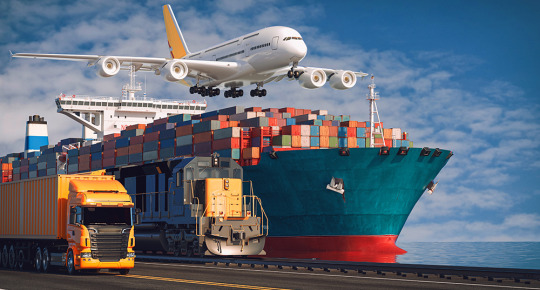
Facilitates Entry into Global Trade Markets
IEC registration allows businesses to legally engage in cross-border transactions and access new international markets. It also helps businesses comply with foreign trade regulations and import-export taxation norms.
Enables Foreign Currency Transactions and Trade Financing
Banks and financial institutions require IEC registration for processing foreign currency payments related to international trade. It is also necessary for securing trade finance, letters of credit, and export credit insurance.
Builds Business Trust for International Clients
Many global companies prefer working with IEC-registered Indian firms as it ensures regulatory compliance. Having an IEC code enhances business credibility and makes it easier to negotiate trade agreements with foreign clients.
Compliance and Renewal of IEC Registration for Long-Term Global Success
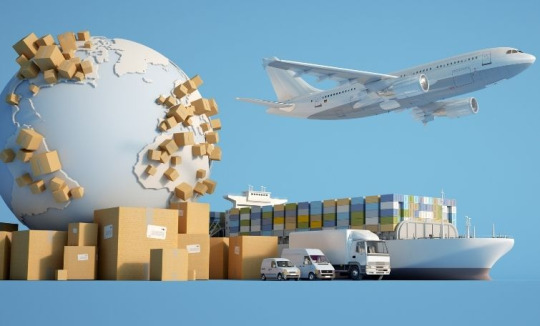
Mandatory Annual Update Requirement
As per recent DGFT regulations, IEC holders must update their registration details annually. Failure to comply may lead to deactivation of the IEC code, affecting global trade operations.
Adhering to Foreign Trade Policy (FTP) Guidelines
Businesses must stay compliant with international trade regulations and India's Foreign Trade Policy (FTP). This includes maintaining accurate documentation and following customs requirements.
Avoiding Trade Restrictions and Penalties
IEC holders must avoid violations such as:
Misdeclaration of goods
Exporting restricted items
Under-invoicing in international trade transactions Non-compliance may lead to penalties, suspension, or cancellation of IEC registration.
Overcoming Challenges in Global Trade with IEC Registration
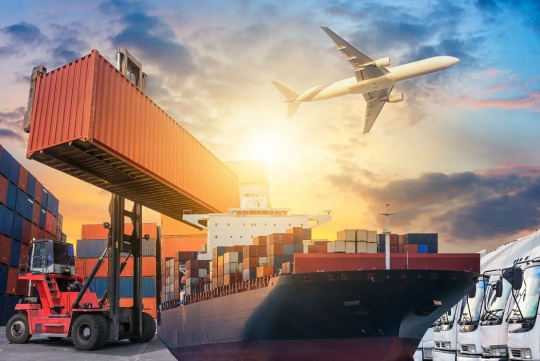
Managing International Trade Regulations and Compliance
Navigating global trade regulations can be complex, but IEC registration ensures businesses meet customs, documentation, and compliance requirements for seamless global trade.
Reducing Operational and Financial Risks in Global Expansion
IEC helps businesses avoid unnecessary delays, trade restrictions, and financial losses by ensuring proper customs clearance and compliance with international trade laws.
Competing Effectively in the Global Market
IEC registration provides a competitive edge by allowing businesses to align with global trade practices, enter new markets, and strengthen their position in international commerce.
Conclusion: Why IEC Registration is a Game-Changer for Global Business Expansion
Import Export Code (IEC) Registration is more than just a legal requirement—it is a crucial tool for businesses looking to expand internationally. It simplifies customs clearance, facilitates foreign trade transactions, and opens doors to new revenue opportunities.
For businesses planning to scale globally, IEC registration ensures regulatory compliance, enhances credibility, and enables participation in government export promotion schemes. Whether you are an aspiring exporter or an established importer, obtaining an IEC is the first step toward global success.
#ExportImport#InternationalTrade#GlobalBusiness#ExportGrowth#ImportExportLicense#TradeCompliance#BusinessExpansion#GlobalReach#InternationalBusiness#GlobalOpportunities#BusinessGrowthTips#Specific to Benefits:#GlobalMarketAccess#TradeFacilitation#InternationalSales#ExportBenefits#ImportBenefits#IndiaExports#USExports)#TextileExports#MadeIn[YourCountry]#Marketing & Informative:#BusinessTips#Entrepreneurship#BusinessAdvice
0 notes
Text

Holika Dahan ki ap sab ko AICS ki taraf se shubh-kaamnayein! AICS Logistics aapke export ko aasaan banaata hai. Aaiye milkar khushiyaan manayein. Holi ke rang, export ke sang!
📞: +91 942 605 2754 📩: [email protected]
#HolikaDahan#Holi#AICSLogistics#GlobalTrade#Export#Import#Logistics#Shipping#India#Festival#Celebration#HappyHoli#Business#Trade#LogisticsSolutions#AICS#LogisticsCompany#HoliCelebration#HoliKaTyohar#ExportImport
0 notes
Text
Food Metal Packaging Coating Market, Global Outlook and Forecast 2025-2032
The Food Metal Packaging Coating Market refers to the industry that manufactures and supplies coatings designed for metal packaging used in the food and beverage industry. These coatings play a crucial role in protecting metal cans from corrosion, enhancing the visual appeal of packaging, and maintaining food safety by preventing chemical contamination. Coatings for metal packaging can be categorized based on their application, such as coatings for 3-piece cans, 2-piece cans, and other specialized coatings used in food and beverage storage.
Market Size
Download FREE Sample of this Report
As of 2024, the global Food Metal Packaging Coating Market is valued at US$ 1.5 billion and is projected to reach US$ 1.9 billion by 2030, reflecting a CAGR of 3.8% during the forecast period (2024-2030). This growth is driven by increasing demand for sustainable and BPA-free coatings, growing consumption of packaged food and beverages, and advancements in coating technologies. Historical trends indicate steady market expansion, with significant adoption in North America, Europe, and Asia-Pacific due to stringent food safety regulations and rising consumer preference for metal packaging.
Competitor Analysis
Key Players
Sherwin-Williams
PPG
AkzoNobel
Henkel
Actega
Salchi Metalcoat
Jiangsu Yangrui New Materials
JEVISCO
Market Segmentation (by Application)
Beer and Beverage Cans
Food Cans
Others
Market Segmentation (by Type)
3-Piece Cans Coating
2-Piece Cans Coating
Others
Key Company
Sherwin-Williams
PPG
AkzoNobel
Henkel
Actega
Salchi Metalcoat
Jiangsu Yangrui New Materials
JEVISCO
Geographic Segmentation
North America (United States, Canada, Mexico)
Europe (Germany, France, United Kingdom, Italy, Spain, Rest of Europe)
Asia-Pacific (China, India, Japan, South Korea, Australia, Rest of APAC)
The Middle East and Africa (Middle East, Africa)
South and Central America (Brazil, Argentina, Rest of SCA)
Get the Complete Report & TOC FAQ
Q: What is the current market size of the Food Metal Packaging Coating Market?
A: As of 2024, the market is valued at US$ 1.5 billion and is projected to reach US$ 1.9 billion by 2030, growing at a CAGR of 3.8%.
Q: Which are the key companies operating in the Food Metal Packaging Coating Market?
A: Major players include Sherwin-Williams, PPG, AkzoNobel, Henkel, Actega, Salchi Metalcoat, Jiangsu Yangrui New Materials, and JEVISCO.
Q: What are the key growth drivers in the Food Metal Packaging Coating Market?
A: Major drivers include rising demand for packaged food and beverages, stringent food safety regulations, and advancements in coating technologies.
#FoodMetalPackaging#PackagingCoatings#MarketForecast#GlobalMarketTrends#FoodPackaging#MetalCoatings#SustainablePackaging#MarketOutlook#ExportImport#IndustrialCoatings#ConsumerGoods#FoodSafety#IndustryGrowth#ProtectiveCoatings#MarketAnalysis
0 notes
Text
Wide Range of Premium Granites Now in Saudi Arabia

Explore a wide selection of premium granite variants now available in Saudi Arabia with DollarExim. From elegant whites to bold blacks and luxurious patterns, find the perfect stone for every space. Partnered with Coneio, we offer simplified regulatory compliance, secured global market access, and hassle-free cross-border logistics. Get in touch today to elevate your interior and architectural projects with quality and reliability.
3885 Al Bandariyyah Street Al FalahRiyadh 13314 Saudi Arabia
Contact: +91-9030689222 Email: [email protected]
#Granite#GraniteVariants#SaudiArabia#DollarExim#Coneio#StoneImports#InteriorDesign#Architecture#MarbleAndGranite#CrossBorderTrade#Logistics#GlobalMarket#NaturalStone#ExportImport#ConstructionMaterials
0 notes
Text
Wheat Export from India: 2025 Insights, HS Codes, and Key Data
India’s role in the global agricultural market has grown exponentially, especially as one of the world’s leading wheat producers. With rising global demand, competitive pricing, and government support, wheat export from India has become a cornerstone of the nation’s trade strategy. This article explores the latest trends, wheat export data, key destinations, wheat HS codes, and the largest exporter of wheat in India, offering a comprehensive guide for businesses looking to navigate this dynamic sector.
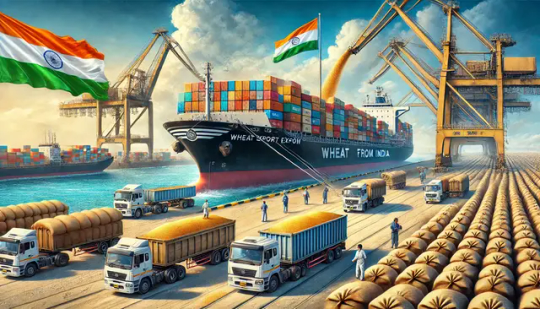
India’s Wheat Production and Export Landscape
India ranks as the world’s second-largest wheat producer, trailing only China. States like Uttar Pradesh, Punjab, Haryana, and Madhya Pradesh contribute over 90% of the country’s output. However, recent years have seen a shift in priorities. In 2024, wheat export from India dropped to $56 billion, a stark decline from previous years. This reduction stems from government policies prioritizing domestic consumption over exports since May 2022. Despite this, India continues to supply wheat to nations like Bhutan, Mali, Senegal, Gambia, and Indonesia under specific agreements.
The outlook for 2025 remains optimistic, with opportunities to expand into new markets and strengthen trade ties. Factors such as improved irrigation, high-yield seed varieties, and diversified wheat types (including durum and bread wheat) position India to meet global demand.
Wheat Export Data and Market Trends for 2025
According to wheat export data, India shipped 5,352 cargoes of wheat flour between March 2023 and February 2024, a 425% year-on-year increase for February 2024 alone. Key markets like the UAE, the USA, and Australia dominate wheat flour export from India, while Turkey, Ukraine, and India itself lead global wheat flour exports.
Despite restrictions imposed in 2022 to stabilize domestic supply, the government authorized limited exports to address food security needs in partner nations. For instance, India approved 2 lakh tonnes of export of flour from India to Nepal in 2025, reflecting strategic trade alliances.
Key Destinations for Wheat Flour Export from India
The top importers of Indian wheat flour include:
Sri Lanka ($1.05 million)
United Arab Emirates ($664 thousand)
Italy ($265 thousand)
Turkey ($50 thousand)
Thailand ($13.1 thousand)
These countries rely on India’s high-quality, competitively priced wheat products. The export of flour from India also extends to niche markets in Africa and Southeast Asia, driven by trade liberalization and government initiatives.
Understanding Wheat HS Codes for International Trade
Accurate classification using wheat HS codes is critical for smooth customs clearance and compliance. Below are the primary HS codes for wheat and related products:
100111: Durum wheat seeds
100119: Durum wheat (excluding seeds)
110100: Wheat flour or meslin
110311: Wheat groats and meal
11010000: Specific HS code for wheat flour
These codes streamline the wheat export from India, ensuring exporters meet international standards. Businesses must stay updated on regulatory changes to avoid delays.
Top India Wheat Exporters and Their Global Reach
The India wheat exporters leading the market include:
Shri Mahavir Agritech (largest exporter of wheat in India)
Pisum Foods Services
Amoli International
A-1 Overseas
ECO Export
These firms leverage India’s robust production capabilities to serve markets in the Middle East, Africa, and Europe. Shri Mahavir Agritech, for instance, has established a strong reputation for quality and reliability, reinforcing India’s position in global trade.
Navigating the Export of Flour from India: Challenges and Opportunities
While the wheat flour export from India sector is promising, exporters face hurdles such as fluctuating domestic policies, rising input costs, and logistical bottlenecks. The 2022 export ban highlighted the fragility of relying on volatile government regulations. Additionally, challenges like labor shortages and small land holdings impact scalability.
However, opportunities abound. Diversifying into value-added products like fortified flour, targeting emerging markets in Africa, and adopting advanced agricultural technologies can drive growth. Platforms like ExportImportData.in provide actionable wheat export data, helping businesses identify trends and buyers.
How to Access Reliable Wheat Export Data
For exporters, accessing accurate wheat export data is vital for strategic planning. Platforms like ExportImportData.in offer real-time insights into global trade trends, competitor analysis, and buyer-seller databases. This information helps businesses optimize supply chains, comply with wheat HS code regulations, and explore new markets for wheat flour export from India.
Final Thoughts
India’s wheat export sector is poised for growth in 2025, driven by rising global demand and strategic government partnerships. By leveraging reliable wheat export data, understanding HS codes, and collaborating with top India wheat exporters, businesses can capitalize on this momentum. Whether you’re exploring the export of flour from India or seeking the largest exporter of wheat in India, staying informed is key to thriving in this competitive market.
0 notes
Text
#Infinity#export#import#logistics#shipping#business#india#exportimport#usa#exporter#trade#transport#exportquality#freight#importexport#exporters#transportation#internationalpayment#skyee#skyeeinternationalpayment#whytochooseskyee#easypayment#skyeepayments#skyeebusiness#skyeepaymentsinindia#skyeelopement#skyeesecure#securepayment#skyeepayment#lowcost
1 note
·
View note
Text
What Are the Top Imports from the Netherlands?
In this blog, we will explore the major imports of Netherlands, the Netherlands import data and all about the Netherlands importers.
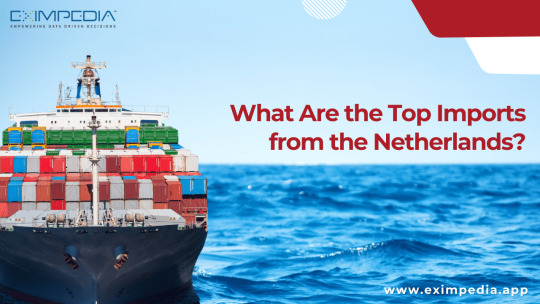
0 notes
Text
How to Obtain an Import Export Code in Dubai: A Complete Guide
Discover how to obtain an Import Export Code in Dubai with our comprehensive guide. Learn the step-by-step process, required documents, and benefits of this essential license for international trade. Start your journey to global trading success and expand your business opportunities in Dubai's thriving trade and business ecosystem.
#sabindia#importexportcode#dubaibusiness#dubaitrade#uaebusiness#exportimport#businessindubai#tradelicensedubai#dubaientrepreneurs#uaetrade#exportbusiness#importbusiness#dubaieconomy#businesssetupdubai#dubaitraders#globaltrade#tradeopportunities#uaeimports#dubaiexports#businessgrowthuae#tradelicense
1 note
·
View note